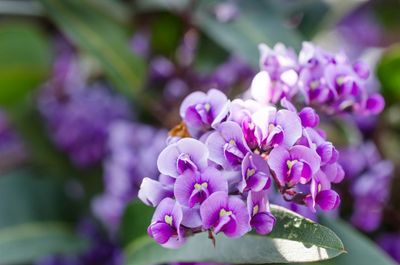Purple Vine Lilac Info
What is hardenbergia? Purple vine lilac (Hardenbergia violacea) goes by many names, including false sarsaparilla, Australian sarsaparilla, purple coral pea, and just plain Hardenbergia. It is native to southeast Australia, where it thrives in rocky soils. It is not particularly cold hardy and can only live outdoors in USDA zones 9 to 11 (in zone 9 it may require protection from frost). In warm environments, it grows as an evergreen and can reach 50 feet (15 m.) in length. In late winter and early spring, it produces hanging strings of small, clustered flowers that resemble pea blossoms. Some cultivars produce pink or white flowers, but the most common color is purple.
How to Grow Purple Lilac Vines
Growing a lilac vine can be overwhelming if you don’t keep the plant in check. Hardenbergia can reach 50 feet (15 m.) in length, and it will twine itself around and climb everything in its path. Choose your planting site carefully and make sure it has a large, sturdy structure to climb or plenty of open ground to spread over. Vine lilac care is relatively simple. Some pruning can be done at any time to keep it in check. Severe pruning (to half or even a third of its size) can be done in spring after blooming is finished in order to keep the vine’s growth in check. Purple lilac vines are drought tolerant and need well-draining soil. They should be watered occasionally, giving the soil a chance to dry out between waterings. They will thrive in full sun in areas with temperate summers. If your summers are especially hot, plant your vine in a spot that receives some afternoon shade.
